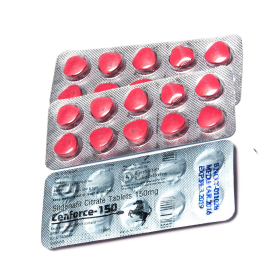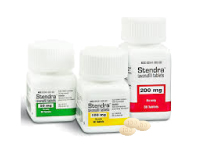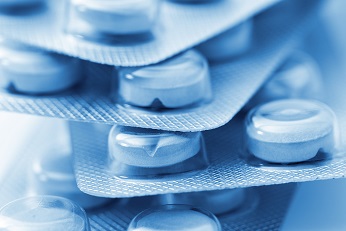So… what is it, exactly?
Cialis is the trade name for tadalafil, a phosphodiesterase type 5 (PDE-5) inhibitor. The active substance belongs to a class of medicines that facilitate penile erection in the presence of sexual stimulation by enhancing the nitric oxide–cGMP pathway. The medicine is used for erectile dysfunction (ED). In addition, once-daily tadalafil is used for lower urinary tract symptoms associated with benign prostatic hyperplasia (BPH), including the situation when ED and BPH are present together. These are the principal, well-established indications in adult men.
Regulatory background is straightforward. In the United States, approval for on-demand use in ED dates from 2003, an additional once-daily ED regimen was added several years later, and the BPH indication followed subsequently. Patent expiry led to the broad availability of generic tadalafil; as a result, cost differences between brand and generic products can be substantial depending on country and pharmacy channel. Outside the United States, national labeling and availability are determined by local regulators and may not be identical; however, the core indications and dosing concepts are generally aligned across regions.
The medicine is formulated as film-coated oral tablets in multiple strengths. Packaging, scoring, and brand appearance vary by manufacturer. Therapeutic equivalence between approved generics and the reference listed drug is based on bioequivalence criteria set by local regulators. Because excipients can differ, non-clinical attributes such as tablet hardness or coating characteristics may vary without affecting the clinical effect when products are used according to labeling.
It is important to differentiate tadalafil from other PDE-5 inhibitors (sildenafil, vardenafil, avanafil). All act on the same enzymatic pathway, but pharmacokinetic profiles differ, which affects onset, duration, and interaction profiles. Tadalafil is characterized by a comparatively long terminal half-life, which enables both on-demand and once-daily regimens. Selection among agents is typically based on patient preference, comorbidity, concomitant medications, and how predictable the timing of sexual activity needs to be. (drugs.com)
How Cialis (tadalafil) works?
Tadalafil selectively inhibits PDE-5, the enzyme that degrades cyclic guanosine monophosphate (cGMP) in smooth muscle within the corpus cavernosum and other tissues where PDE-5 is expressed. During sexual stimulation, nitric oxide released from nerve endings and endothelial cells activates guanylate cyclase, which increases intracellular cGMP. Elevated cGMP decreases intracellular calcium, promotes relaxation of cavernosal smooth muscle, and allows increased arterial inflow and veno-occlusion that together support penile rigidity. By slowing cGMP breakdown, tadalafil augments the body’s own response to sexual stimulation. In the absence of sexual stimulation, the nitric oxide–cGMP cascade is not activated to a clinically meaningful degree, and tadalafil does not initiate an erection by itself.
After oral administration, absorption is reliable. Median time to maximum plasma concentration is typically within 2 hours, though individual values may vary. Food does not produce a clinically meaningful effect on exposure. The terminal elimination half-life is prolonged relative to other drugs in the class, which accounts for a longer window during which erectile response can occur following a dose. The practical implication is that patients may experience sufficient effect for up to approximately 36 hours after on-demand dosing; this refers to the time window during which stimulation can lead to a response, not to the continuous presence of an erection.
Metabolism occurs primarily via CYP3A pathways with subsequent excretion in feces and urine. Concomitant administration with strong inhibitors or inducers of CYP3A can change tadalafil exposure. This is clinically relevant for patients receiving certain antifungals, macrolide antibiotics, antiretroviral boosters, or enzyme-inducing anticonvulsants. In clinical use, dose selection and regimen should take account of these interactions and the patient’s comorbid conditions.
Cialis dosing: on-demand vs daily
Dosing is determined by indication, anticipated frequency of sexual activity, tolerability, and concomitant disease. The same active substance supports two distinct approaches: on-demand administration before anticipated sexual activity, and once-daily administration for continuous effect and for BPH symptoms.
Cialis on-demand regimen for erectile dysfunction
A commonly used starting dose is 10 mg taken prior to anticipated sexual activity. The dose can be titrated to 20 mg if the initial response is inadequate and side effects are acceptable, or reduced to 5 mg if side effects are prominent. One dose per day is the maximum recommended frequency for on-demand use. Patients should allow adequate time for onset; many will see effect by about 30 minutes, but some may require longer. It is reasonable to assess response across several dosing attempts before concluding that the chosen dose is ineffective.
Cialis once-daily regimen for ED and BPH
For daily administration, 2.5 to 5 mg once daily is used for ED, taken at approximately the same time each day. For BPH, 5 mg once daily is the regimen most commonly used, regardless of timing relative to sexual activity. Continuous dosing aims to maintain a relatively steady plasma concentration and to decouple sexual activity from pill timing. When converting from daily to on-demand use or vice versa, patients should avoid overlapping full exposures on the same day and should discuss transitions with their clinician if they have cardiovascular comorbidities.
Cialis dosing in special populations and clinical considerations
- Renal or hepatic impairment: dose adjustments and regimen restrictions may apply. Once-daily use is generally not recommended in severe renal impairment. In hepatic impairment, particularly moderate to severe disease, cautious dosing and clinical supervision are advised.
- Older adults: no specific age-based dose is mandated, but older patients often have comorbidities or polypharmacy; a conservative starting dose and careful up-titration are appropriate.
- Concomitant antihypertensives: additive blood-pressure-lowering effects can occur. Clinical monitoring for symptomatic hypotension is prudent, especially at initiation or dose changes.
- Missed dose (daily regimen): if a dose is missed, take it when remembered on the same day; do not take extra doses to compensate. Resume the usual schedule the next day.
- Maximum frequency: do not administer more than one dose per day in any regimen. Combining daily and on-demand doses on the same day is not recommended.
How to take Cialis and what to avoid
Tablets are taken orally with water. Administration with or without food is acceptable because food does not meaningfully change systemic exposure. For daily regimens, consistent timing supports stable exposure. Storage should follow the information on the pack with attention to temperature and moisture control.
Grapefruit and grapefruit juice can increase tadalafil plasma concentrations through effects on CYP3A metabolism and should be avoided during treatment. Alcohol can potentiate blood-pressure-lowering effects; light intake is usually tolerated, whereas heavier intake increases the likelihood of symptomatic hypotension such as dizziness or orthostatic symptoms. Patients should be advised to assess individual sensitivity before engaging in activities that require sustained alertness following initial doses.
In the event of suspected overdose, medical evaluation is recommended. Supportive care is typically used. Because of the long half-life, adverse effects can persist longer than with short-acting comparators.
Before buying Cialis, read a useful article that tells you all the details of how to safely buy generic Cialis and not overpay Overview of the Drug and Generics: What Is Cialis Prescribed For and How Is It Different from Tadalafil.
Side effects: the usual suspects—and the red flags
The safety profile of tadalafil has been characterized across clinical trials and post-marketing experience. Frequently reported adverse reactions include headache, flushing, nasal congestion, dyspepsia, back pain, and myalgia. These are typically mild to moderate and self-limited. Back pain and myalgia often appear 12 to 24 hours after dosing and resolve within 48 hours; non-prescription analgesics are commonly sufficient if treatment is needed.
Less common adverse reactions include dizziness, facial edema, palpitations, abdominal discomfort, and, in predisposed individuals, transient visual symptoms such as a change in color discrimination. Sudden decrease or loss of vision has been reported rarely and may reflect non-arteritic anterior ischemic optic neuropathy; risk factors include low cup-to-disc ratio, age, and cardiovascular risk. Sudden decrease or loss of hearing, sometimes accompanied by tinnitus and dizziness, has also been reported. In either case, patients should discontinue the medicine and seek urgent evaluation.
Priapism (a prolonged and sometimes painful erection lasting more than four hours) is a medical emergency. The risk may be higher in men with certain hematologic conditions or anatomical penile deformities. If priapism is suspected, immediate medical attention is required to prevent potential tissue damage.
Overall cardiovascular risk should be assessed before treatment initiation. Sexual activity itself imposes a degree of cardiac workload. Men with unstable cardiovascular disease, recent myocardial infarction or stroke, uncontrolled arrhythmias, severe hypotension or hypertension, or decompensated heart failure require evaluation and stabilization before considering therapy.
Hard stops and tricky combos
Contraindicated combinations
- Nitrates in any form, including short-acting and long-acting preparations and recreational amyl nitrite. Concomitant use can cause a profound fall in blood pressure. Patients using nitrates intermittently for angina must not take tadalafil.
- Guanylate cyclase stimulators such as riociguat. Co-administration increases the risk of hypotension.
Use with caution
- Alpha-adrenergic antagonists: co-administration can produce additive blood-pressure-lowering effects. If combination therapy is necessary, ensure the alpha-blocker dose and blood pressure are stable before introducing tadalafil at a low dose, with monitoring for symptomatic hypotension.
- Antihypertensives and diuretics: additive effects are possible. Clinical monitoring is recommended at initiation and dose adjustments.
- Strong CYP3A inhibitors (for example, certain azole antifungals, macrolides, HIV or HCV protease inhibitor boosters): increases in tadalafil exposure can occur; dose reduction and careful monitoring may be required.
- Strong CYP3A inducers (for example, rifampin, certain anticonvulsants): reduced tadalafil exposure can occur; clinical effect may be diminished.
- Other treatments for ED: concurrent use with other PDE-5 inhibitors or intracavernosal agents is not recommended outside specialist supervision due to safety concerns.
- Grapefruit products: avoidance is advised because of potential increases in exposure.
Availability & the UK twist
Tadalafil is prescription-only in many jurisdictions. The active substance is available as multiple generic products as well as under the branded name Cialis in markets where the brand is marketed. Country-specific pharmacy rules determine how prescriptions are issued and dispensed, whether electronic or paper, and whether repeat dispensing is permitted.
In the United Kingdom, a pharmacist-supplied product containing tadalafil 10 mg has been reclassified to a pharmacy medicine, which allows supply without a prescription after a pharmacist assessment of suitability and safety. This reclassification does not alter contraindications, interactions, or the need to review cardiovascular status where appropriate. Outside the United Kingdom, over-the-counter availability is uncommon and local rules should be checked before purchase.
Quick FAQ
Does food matter?
No. Administration with or without food yields similar exposure. Patients can take the medicine with meals according to preference or gastrointestinal tolerance.
How often can I take it?
For on-demand use, do not exceed one dose per day. For daily use, take one dose at approximately the same time each day. Switching between regimens should be discussed with a clinician if cardiovascular comorbidity or interacting medicines are present.
What if I do not notice an effect after the first dose?
Assess response over several separate dosing attempts, ensuring adequate sexual stimulation and sufficient time after taking the tablet. If response remains inadequate and side effects are acceptable, a higher on-demand dose within labeling may be considered. If still inadequate, alternative strategies should be discussed with a clinician.
Does it increase sexual desire or shorten the refractory period?
No. The medicine facilitates the hemodynamic component of erection in response to stimulation. It does not increase libido and does not shorten the refractory period after ejaculation.
Can I drive or operate machinery after taking it?
Dizziness and changes in blood pressure are possible, especially with alcohol or interacting medicines. Patients should understand their individual response before performing tasks that require sustained alertness.
Is long-term daily use acceptable?
Long-term daily use has been evaluated in clinical studies. Ongoing monitoring of efficacy, tolerability, blood pressure, and interactions is appropriate, especially when comorbidities or new medications are introduced.
Disclaimer: This material is informational and does not replace individual medical advice. Decisions about initiating, adjusting, or discontinuing therapy should be made with a qualified clinician, particularly in the presence of cardiovascular disease, visual or auditory symptoms, or medications that interact with tadalafil.






